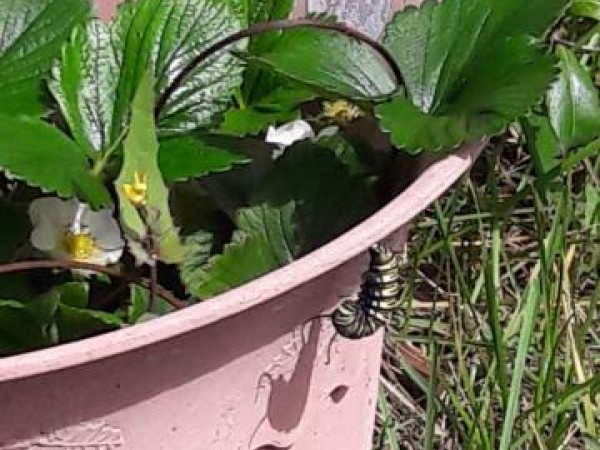Western Monarchs 2020 Spring Report #4
By Gail Morris
03/26/2020
Limited sightings
Warmer temperatures have returned but new sightings of monarchs and their eggs, larvae and pupae are still occurring in California and Arizona in the same regions as last week. This is the time in the spring migration when tracking monarchs becomes more of a challenge. Remigrants are reaching the end of their lifetimes in their next few weeks and evidence of their offspring are not as visible.
Coastal region monarchs
Monarch sightings were mainly hugging the coastal regions in California. Your reports are important this time of year and they help us all learn more about monarch movement.
Dwain in Westminster, California, found a monarch pupa on March 20. “I was looking for this guy for the last few days. I gave up hope thinking it was eaten because [the] last place I [had] seen it was right on the outside of a pot facing all the birds. Well today I found it in “J” form. So praying it makes it all the way to butterfly!”
Further north, Mike found his first of the season larvae on March 21 in San Rafael, California. “3 found on Milk Weed [sic] planted spring 2019. Did spot an adult sunning on plants twice summer of 2019.”
The next day, on March 22, Kelley spotted one adult monarch in San Jose, California, the first of the season. “Seen in the field at Schallenberger Elementary. Near some dandelions.” Remember to keep the dandelions popping up around town! They are often an important nectar source for migrating monarchs.
Painted Ladies?
After periods of abundant spring rains, in some years painted lady butterflies will appear in large numbers in the southwest. Butterfly enthusiasts in Arizona are reporting modest numbers this week. Take a few moments to learn the difference between monarch and painted lady butterflies so you can enjoy them all when you see them.
A Challenging Time!
This is hard! Get outdoors in your own yard each day or take a walk in your neighborhood with your pet if you can. Explore nature’s beauty unfolding around you this spring season. Take your camera along and let us know what you find!
Report your Sightings!
Spring challenge: When the monarch population is low, it may be difficult for monarchs to find each other to mate, lay eggs, and continue expanding the population during the breeding season. Every monarch you see – whether an adult, egg, larvae or pupae – is important to report and we look forward to reading the observations that you send to Journey North this season! Are native milkweeds up and ready for monarchs where you live? Are native milkweeds blooming? Send in your photos!
Gail Morris is the Coordinator of the Southwest Monarch Study (www.swmonarchs.org), a Monarch Watch Conservation Specialist, and the Vice President of the Monarch Butterfly Fund and the Central Arizona Butterfly Association. The Western Monarch Population News is based on comments provided to Gail Morris. We hope to increase the number of sightings and therefore photos and comments entered into the Journey North. We rely on the volunteers who communicate regularly with Gail and who agree to participate in our effort to increase awareness of the population of western Monarchs.
